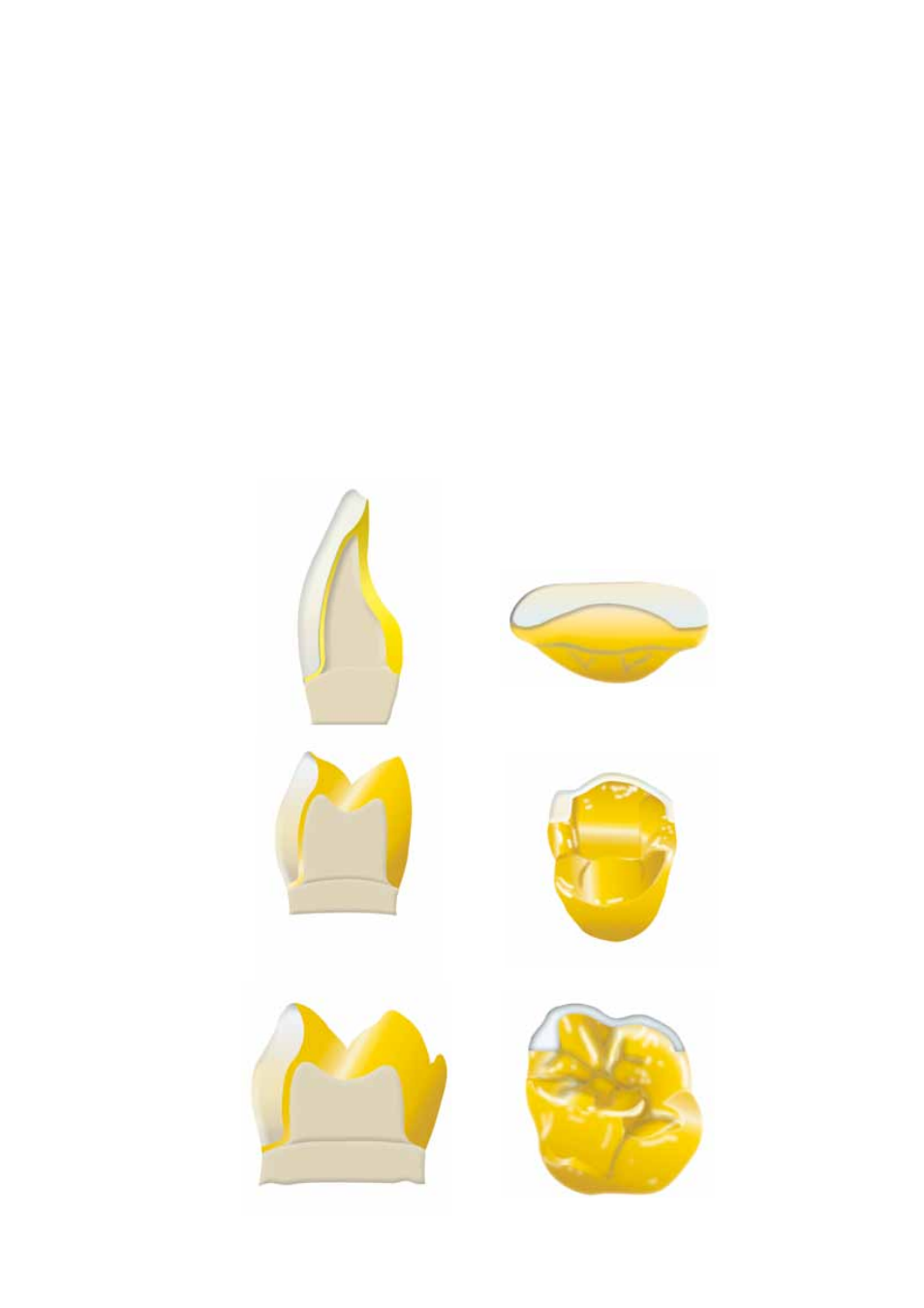Ivoclar Vivadent SR Adoro User Manual
Page 32

32
2. Framework design for partial veneers (limited space conditions)
A different framework design is required for partial veneers (e.g. telescope and conus crowns). As the space in the occlusal,
palatal and lingual area in particular tends to be limited in many cases, this area of the restoration must be designed in
the metal in such a way that cracks or delamination cannot occur because of too thin layer thicknesses of the veneering
composite. In this design, the transition between the metal framework and the veneering composite should be clearly
defined and it should incorporate a right angle finish line. The transition areas between the metal framework and the
veneering composite must not be located in the contact point areas, nor on surfaces involved in masticatory functions. A
chamfer or wraparound technique is required in partial veneer preparations to provide adequate support for the veneer.
Observe the palatal area in upper canines (canine guidance) and the occlusal area in posterior teeth. To obtain a balance
between esthetic and functional properties, it is advisable to reduce the medial corner of the occlusal surface in upper
posterior teeth in particular to attain a harmonious esthetic appearance, especially when the buccal corridor is exposed.
The thickness of the metal framework for single crowns must not be less than 0.3 mm and 0.5 mm for bridge abutments
after finishing (see diagram).
For further information, please refer to the Instructions for Use of the corresponding alloy.
Anterior crowns
Premolar crowns
Molar crowns
